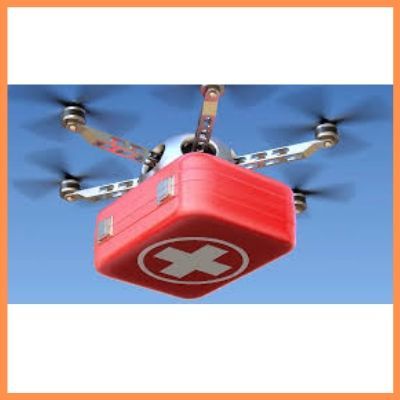In the unprecedented time, where everyone is talking about the economic slowdown and financial difficulties, there have been a few startups sectors that have managed grow exponentially well.
The Covid 19 pandemic has shaken the world and has brought many business to a halt, although startups have lost their momentum they are already on the path to recover while the newly created trends are expected to see a long term success.
Nasscom said that 40% off Indian tech startups were forced to halt operation, however the investments and startups have shown resilience and recovered as India saw a rapid shift to digital services and payments. Data from industry tracker Tracxn showed that, investors have put in about $9.3 billion into startups in 2020 despite the Covid 19 pandemic upending many sectors of the economy.
Ed –Tech
Fintech
Health and wellness
HR tech: Cloud and SaaS
OTT platforms
Online Gaming
FAQ
How These Startup Sectors Bloomed During Lockdown
One of the simple explanation for the growth of some section of the startups is the emergence of the “Covid economy” which demands or medical supplies and coronavirus related goods which naturally grew during the pandemic, creating lots of opportunities for new companies to step in and take their share of a rapidly developing market. These companies realize that post Covid 19, this new normal will be accepted as the norm for the remaining in the competitive business.
For some of these sectors, the new normal would bring in newfound opportunities. A whole new market that was untouched before is now up for grabs. As we are talking of all this, some startups are already working upon the aforesaid scenario. Let’s take a closer look at the startup sectors that are most likely to flourish after the end of COVID-19.
Lets look at the Sectors that Bloomed During Lockdown
Ed –Tech
One sector that continues to grow rapidly is online education. With Covid 19 locking down Indian citizen since the end of March, online education and e-learning platform have become the need of the hour and so has seen an astounding adoption and exponential growth.
The online education sector is observing a sudden surge and people from all walks of life, all the Covid 19 affected nations are looking up to alternatives of conventional teaching and learning.
That’s not surprising, considering that a whopping 1.5 billion students were grounded almost overnight as cities locked down and schools closed. A report by BARC India and Nielsen reveals that there has been a 30% increase in the time spent on education apps on smartphones since the lockdown.
People are afraid to send their children to places where social distancing is not practiced and hence the ed tech sector is tapping on every possible entity they can.

Ed tech are coming up with solutions that find their usage in various places from universities and schools, to remote employee onboarding, and upskilling to learn new skills and hobbies. Byju’s India earliest Ed tech startup saw 7.5 million new users on its platform since it started offering free access to content. The time spent on its app increased from 70 minutes pre-lockdown to 91 minutes during the lockdown.
The story is the same for other edtech players in the arena. Unacademy recorded 1.4 billion watch minutes while Toppr saw 100 percent growth in free user engagement in March. While Edtech startups Great Learning said its annual revenue rose 150 percent to Rs 325 crore. The Vedantu platform has also grown exponentially to 6.5 lakh additional learners across K-12 and competitive exams such as JEE and NEET.

Fintech
During the pandemic the demand for contactless solutions has accelerated the employment of fintech services. This growth of the fintech sector helped the users to check for much more personalized, multi optional financial experience and new trends in areas like banking payments, insurtech, etc. Out of 900 plus deals and $11.5 billion total funding raised in 2020, fintech topped the chart with $2.1 billion in funding and 131 in deal counts.
In such times fintech startups play a pivotal role as they are a perfect option to the stringent and conventional banking systems which sometimes fall short on policies. For small scale enterprise or unemployed individuals who require funds on short notices, these financial entities are the only ray of hope. The pandemic has acted as a booster for the country’s fintech sector giving it the much needed energy and growth trajectory to expand its footprint across the nation.
According to Inc42 Plus, funding in fintech is expected to grow to $2.7 Bn in 2021. This is why of the 11 Indian startups Unacademy, Pine Labs, FirstCry, Zenoti, Nykaa, Postman, Zerodha, Razorpay, Cars24, Dailyhunt and Glance that became unicorns in 2020, three belonged to the fintech segment. The growth volume stood at 70% from 1.30 billion transactions in December 2019 to 2.2 billion in 2020, while the value of UPI transactions increased 105% from Rs 2.02 lakh crore in December 2019 to Rs 4.16 lakh crore in December 2020.
Among the leading deals in the fintech sector last year, Flipkart founder Sachin Bansal-owned Navi Technologies led the chart with $398 Mn infusion by Bansal, Gaja Capital, and World Bank’s investment arm IFC, followed by Pine Labs at $300 Mn and PaySense’s acquisition by PayU at $185 Million.

Health and wellness
The pandemic has pushed health and wellness services online and has resulted in a boom of online health and wellness services such as telehealth tech, remote diagnostics, and monitoring, remote mental healthcare, online fitness, healthy diets, motivational contents, and more. According to a report by Practo, online doctor consultations have increased 500% since March 2020, as five crore Indians are now accessing healthcare online amidst the Covid 19 pandemic.
Companies like Practo and DocPrime, mFine, CallHealth and Lybrate are some of the leading telemedicine startups, while other small startups are looking to make it in the industry that is currently on the rise. The telemedicine market in India is expected to reach $5.4 Billion by 2025 with a CAGR of 31%. Innovative technologies are allowing health organizations to enhance the access and reduce the burden on hospitals through real time consultation with doctors through smartphones tablets, laptops or PCs.
Telemedicine will reduce the time of consultations and improve the quality of healthcare services in rural areas, removing many of infrastructural challenges. Telemedicine can also help in reducing the burden on the tertiary hospitals by providing diagnosis and treatment to patients in their own geographical location and reducing chances of patient’s exposure due to hospital visits. While India is already one of the top 10 countries in the telemedicine marketing the world, adoption of a regulatory framework will help the segment grow rapidly.

HR tech: Cloud and SaaS
The rise of HR SaaS and remote working platforms in times of Covid 19 is not surprising. SaaS and remote working tools fall right in the path of success in such times. Businesses are also now understanding the value and operational simplicity that cloud adoption can bring to their IT environments, and various reports forecast a further increase in the use of SaaS solutions in 2021 and beyond. These applications would serve the founding stones for the majority of business operations in the future and a haven for existing ones.
The covid 19 pandemic has been unable to dampen the interest of investors in Indian startups which offer software as a services (SaaS). According to a report by Brain and company the SaaS firms could capture 7%-9% of the market by 2022, and SaaS companies founded by Indians can reach upto $20 billion in revenue.
The global SaaS market is estimated to grow to $230 billion in 2022 from $145 billion in 2019. Startups such as Zoho, Druva, Icertis, and Freshworks which breached the $100-million annual recurring revenue (ARR) mark, adding that there is a healthy pipeline of companies.

OTT platforms
OTT platform have proven to be time and cost effective, provide a more personalized version of the same experience and one can experience these at the comfort of their homes. OTT platforms in India are growing exponentially in the terms of subscribership because of various reasons. Digital India plays a major role in promoting the use of OTT platforms to stream diverse content from all over the world. One of the reason the availability of cheaper smartphones and internet has enabled a large chunk of the population to gain access to online platforms.
Platforms like Voot, Sony Liv and Zee 5 are OTT platforms developed by existing broadcast channels to remain relevant and to cater to the shift in audience from TV viewership to OTT platforms. However, most of their content on these platforms are the same as the ones broadcasted on TV. With the entry of global players like Netflix and Amazon Prime Video, users are offered a plethora of original content. Hotstar is currently the most popular OTT platform in India according to data from a mobile advertising and Internet service provider.
Online Gaming
In India, Covid 19 has taken this sector to the next level as there have been new gaming startups and platform have been reporting increased revenues mainly because of the pandemic. Furthermore, there is an emergence of new industry trends such as e- gaming, fantasy gaming and cloud-based gaming. Additionally, gaming is not only about playing anymore, but it is also about watching. the Indian online gaming Industry is growing at an exponential rate upon year and is expected to be worth $1.1 billion by 2021.
Winzo games reported three times more user engagement and 30% higher traffic in online mobile gaming. Similarly Paytm First games also reported 200% increase, with 75,000 new users only during the pandemic. Three in every five serious gamers are now playing for around four hours more than before the lockdown. The online gaming industry is still quite an unexplored area in India but the companies that have taken the leap are flourishing and are now expected to grow by 41% in 2021.























